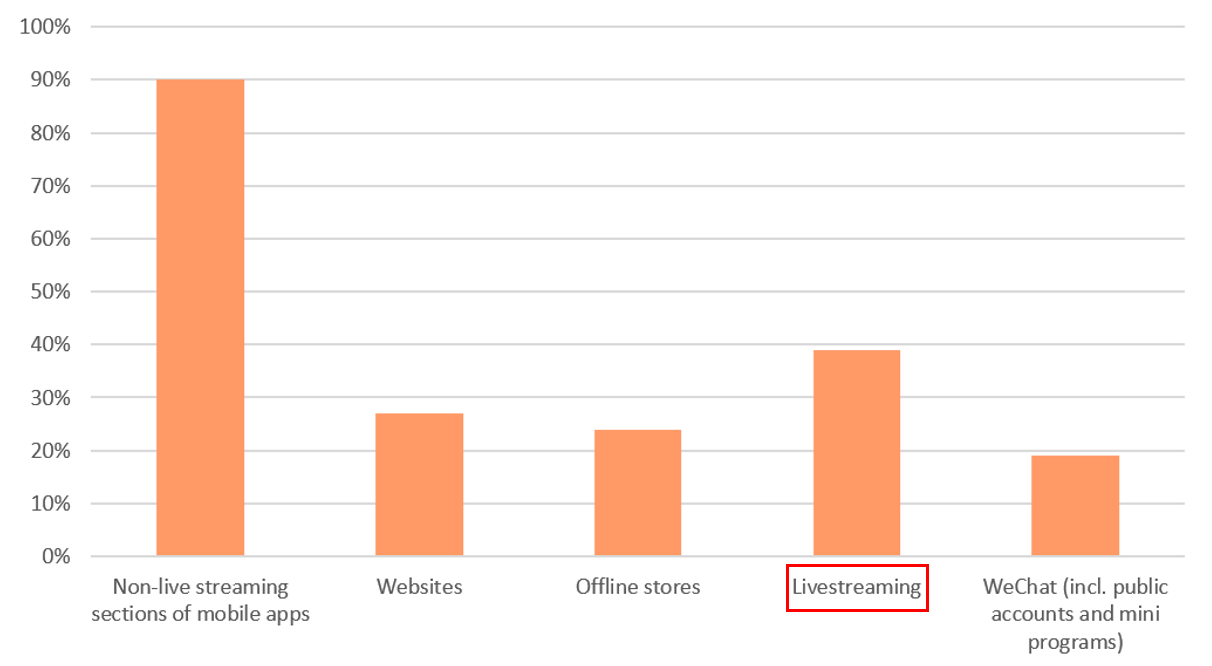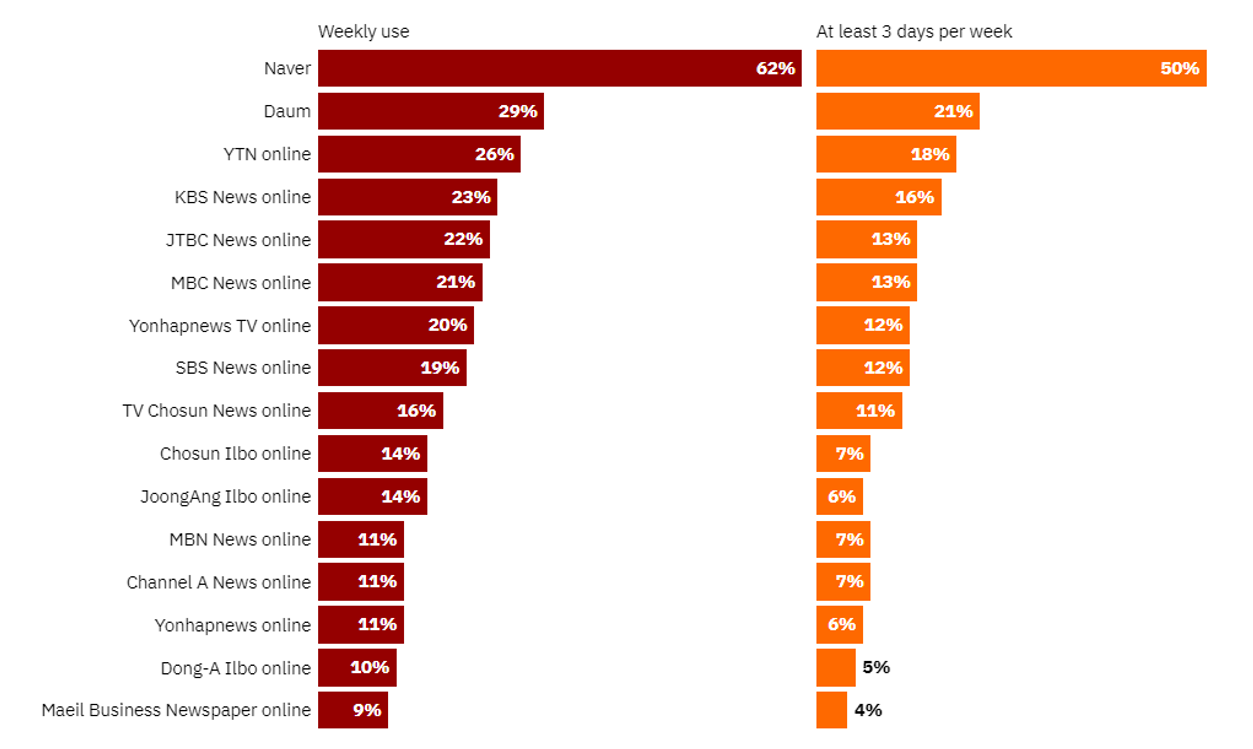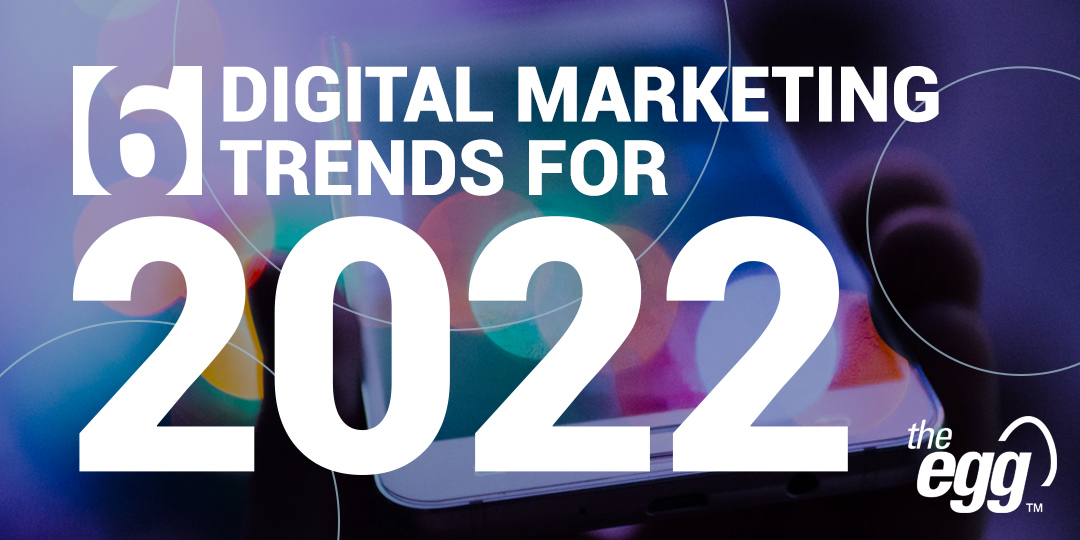6 Digital Marketing Trends in 2022: Rocket Launch your Brand
Digital marketing is forever in flux with new standards of engagement that inspire and challenge the industry.
While building trust along the customer journey has always been critical, it has never been more time-sensitive: Consumers now expect brands to engage them whenever and wherever with a tailored user experience.
And it is these hyper-connected consumers that have upped the ante for new technologies, channels of engagement, and data-driven optimizations. So, what’s in store for the year ahead? Here, we’ve researched 6 digital marketing trends set to rocket launch your brand in 2022 across Asia and beyond:
2022 Digital Marketing Trend #1: Matching search intent is critical for modern SEO
For the past few years, SEO has been shifting from technical tactics to human elements. This means optimizing for users—not just crawlers—with relevant content that adds value and answers questions.
Throughout 2021, we saw Google push this shift even more in terms of user experience and content quality:
Page Experience Update
In mid-2021, Google began using page experience as part of its ranking system for mobile (and will introduce this to desktop in February 2022).
Among other features, the page experience update puts greater emphasis on Google’s Core Web Vitals, which indicate the efficiency of a page from a user perspective. Additionally, the new Page Experience Report in Google Search Console evaluates your site performance with insights like how many of your URLs have optimized page experiences and trends over time.
About this result
In February 2021, Google launched its About this result feature to give greater context to the authority of a result, such as when Google first indexed the site, how Google sourced the information, site security based on HTTPs protocol, and any Wikipedia—reliable, crowd-sourced—information on the brand behind the result.
Passage Indexing
In February 2021, Google updated its passage ranking to better differentiate specific passages on a page and rank them separately (rather than ranking an entire page with the specific passage potentially buried). This makes it easier for users to find exact information quickly and efficiently.
Product Reviews
Over 2021, Google updated its product reviews to favor those produced by users who demonstrate a sound knowledge of a particular topic and provide rich and original insights. New best practices rolling out in 2022 include:
- Providing evidence, such as visuals, audio, or other links of your own product experience, to support your expertise and reinforce the authenticity of your review.
- Including links to multiple sellers to give the reader the option to purchase from their merchant of choice.
What To Expect in 2022
What value do you bring to users? Is the search experience fully optimized? The overall shift in SEO from minute code and keyword optimizations to intent and experience optimizations means that your content must speak to a human rather than just an algorithm.
This means that you can forget about gimmicky SEO techniques: Instead, provide quality content and prioritize the user experience.
Learn to deeply understand what questions your customers have (keyword research helps!) and answer the right questions (with varied content types) at the right time.
When search engines announce new features (e.g., new structured data type), take a good look and consider adding those to help engines understand your information and how it is relevant to users.
And don’t forget that Google’s product review and desktop page experience updates are coming in 2022!
2022 Digital Marketing Trend #2: Machine learning disrupts digital advertising
With the capacity to make strategic decisions more efficiently and accurately than humans, machine learning is among the major disruptions in the ad world right now.
Digital advertisers are leveraging machine learning algorithms to understand and predict trends in user behavior and deliver personalized experiences to the right audience, on the right channel, at the right time.
Not only has this made advertising more effective, but it is also rapidly changing how paid media teams allocate their resources and plan and execute their ad campaigns.
Some of the benefits of machine learning towards advertising include:
- Improved user segmentation: You can learn more about your existing customers by granularly measuring their activities over time.
- Personalized customer experiences: With improved segmentation, you can better visualize your customer profiles and serve them ads based on their preferences and where they are in your conversions funnel.
- Creative optimization: Machine learning lets you test multiple variables within your ads (CTA buttons, headlines, descriptions, etc.) and provides performance-driven insights on which versions proved most effective for any desired user action.
- Task automation: From optimizing creatives to allocating budgets, digital advertising tasks have traditionally involved manual handling, which today can be executed more efficiently via machine learning.
What To Expect in 2022
Machine learning is here to stay: Its capabilities—from facilitating better allocation of ad resources to making strategic targeting decisions—are only getting stronger and more universally adopted.
For example, among Google Ads’ 4 new features to its Insights page, demand forecasts use machine learning to predict emerging search interests over the next six months, serving insights relevant only to your business—i.e., based on the categories where you advertise.
So, with more forward-looking data, not only will you better anticipate emerging search trends, but you can optimize your ad campaigns to truly resonate with your customers to drive more sales and conversions. You can also view the specific search terms predicted to better prepare and allocate your ad budget.
And despite general concerns in the industry that these algorithms might take over some tasks, such tasks will likely be mundane, repetitive, and time-intensive. On the flipside, automation will significantly free up resources and time for tasks that require a human touch, such as designing creatives to go alongside ad campaigns.
WANT DIGITAL INSIGHTS STRAIGHT TO YOUR INBOX?
2022 Digital Marketing Trend #3: Live commerce skyrockets in China
Mobile, chatbots, social—among the disruptions caused by the pandemic was the tremendous rise of digital, enabling customers to shop anywhere and anytime. Retailers, in turn, are meeting them with seamless live commerce experiences to increase loyalty and win sales in China.
The revival of China’s domestic tourism and retail in 2021 coincided with the soaring popularity of livestreaming, so much so that the duration of livestreaming content across WeChat rose by an astounding 601% over May Day 2021. WeChat—China’s #1 social platform with 1.25 billion active users—even lets brands auto-message followers with shortcuts to their livestreaming content.
Similarly, livestreaming was also the main driver for shopping holiday sales on Douyin, the Chinese version of Tiktok. During Single’s Day 2021, Douyin recorded a 31% year-on-year (YoY) increase in the number of young shoppers under the age of 24 who mentioned buying from stores that were setup within the platform.
Douyin has also tested in-video search on selected accounts, letting brands embed links to product listings within video content. And Douyin’s parent company, ByteDance, has a newly launched Department of E-commerce Business, clearly signifying its desire for a larger share of China’s massive e-commerce marketplace.
What To Expect in 2022
With domestic travel and retail therapy on the rise in China, it’s prime time for brands to optimize their social media accounts and get creative with their promotional strategy, especially given the saturating penetration of local e-commerce giants like Alibaba and Pinduoduo.
But while e-commerce giant Alibaba may not have the same content appeal as video platforms like Douyin, its in-video search technology that uses AI image recognition to help users identify products and find them on Taobao and Tmall is expected to takeoff in 2022.
Livestream shopping has grown steadily even after lockdowns were lifted in China and was the second-most popular shopping channel during Singles Day 2021.

Livestreaming has also become a well-established outlet for influencer marketing. However, this bears high barriers to entry at its current state in China’s consumer market. This reality owes much to the successes of the businesses and influencers that rode the initial wave—the cost and exclusivity of influencer marketing in China has now skyrocketed.
Ultimately, however, engagement opportunities are far and wide on China’s social media and will only grow as platforms continue enhancing their features in line with the social trends that dictate and drive the country’s behemoth market.
Going forward, expect more monetary and content-related regulations on live commerce, which will continue to grow steadily but under directives intended to curb monopolistic practices in China’s digital space.
2022 Digital Marketing Trend #4: Unprecedented news consumption on Korean search engines
In 2021, South Koreans consumed more news from local search giants Naver and Daum rather than traditional or social media sources, driven by an increased need for timely news bulletins and live COVID-19 updates.
What sets South Korea apart is that Korean users care little about brands when reading news online and, subsequently, are not drawn to individual news sites given the more convenient—and not to mention, free—alternative: Naver News.
Indeed, more people are viewing Naver as a news medium on its own. According to Reuters, a survey conducted on the news consumption habits of 2,000 South Korean respondents in 2021 found that:
- 62% of respondents used Naver News weekly while 50% used it at least three days a week.
- The second-most consumed online news source, Daum, was visited weekly by 29% of respondents and at least three days a week by 21%.

Since most newsreaders would already be signed into Naver, it is far more convenient to read and interact (i.e., post comments) with Naver’s selection of news articles than visit a smaller media site requiring an additional sign-in process.
Aside from its unparalleled scale and user-friendliness, Naver News also curates more trending news articles—both national and regional—than individual news sites based on its AI-powered algorithm.
What To Expect in 2022
The dominance of online portals in the news market, led by Korean heavyweight Naver, will strengthen in 2022. Likewise, we can expect Naver to continue updating its universal SERP to prioritize Naver-owned properties, among them being Naver News, in its search rankings.
In terms of SERP rankings, Naver favors results from its own properties, even creating a new VIEW section in 2021 and consolidating its properties there to increase Naver-owned exposure. The VIEW section tends to be located above the fold, whereas the section that features organic results usually ranks towards the bottom.
This stresses the need to diversify your content portfolio across Naver properties to appear across Naver’s SERP opportunities—including Naver News, Naver Blog, Naver Café, Naver Post, and more—for your Korean search marketing strategy in 2022.
2022 Digital Marketing Trend #5: Japanese B2Bs prefer Facebook over LinkedIn
As of January 2021, there were 94 million social media users in Japan (an increase of 4.4 million over 2020). To reach this massive audience, brands in Japan have allocated more of their budgets and marketing efforts to social media channels in recent years.
This includes Japanese B2B brands, which you might assume would favor LinkedIn for marketing. But perhaps surprisingly, Facebook is preferred over LinkedIn as the professional platform in Japan, whether that’s networking or establishing a social base for a company or service.
In fact, there are only 2 million Japanese users on LinkedIn. And the probability of reaching a Japanese audience through advertising on LinkedIn is only around 2%—compare that to the much higher global average of 12%!
On the flipside, Facebook has 22+ million Japanese users. This figure alone makes it much more compelling for Japanese enterprises, 80.4% of which use Facebook with 57.1% being B2Bs.
What To Expect in 2022
Japanese people view Facebook—not LinkedIn—as the premier professional network. That won’t change in 2022.
While Twitter, Instagram, and the newborn Clubhouse are emerging business communication tools, their B2B scopes remain limited, as Instagram and Clubhouse are more lifestyle-oriented, and Twitter is viewed by Japanese people as rife with anonymous accounts and synonymous with fake news.
As such, Facebook will continue to be the backbone of B2B marketing in Japan in 2022.
Facebook has a larger userbase of people over 40—the prime age of Japan’s C-suite decisionmakers—and more advertising options than LinkedIn. So, you will be able to reach more senior-level managers and stakeholders who impact business decision-making with optimized Facebook ad targeting and leveraging interactive ad formats like Slideshows, Stories, and Collections.
In addition, since interest, community, and business groups thrive on Facebook in Japan, you can gather user interest data on a particular topic, business area, or industry to refine your Japanese targeting strategy for 2022.
2022 Digital Marketing Trend #6: Growing omnichannel engagement in Hong Kong & Taiwan
With a nominal GDP of USD $345 billion and a small but engaged population of 7.5 million, Hong Kong serves as a gateway to neighboring Mainland China and a regional base for expansion across Asia.
Meanwhile, Taiwan—a global player in IT and semiconductor technology—is also a highly developed free-market economy with a nominal GDP of USD $760 billion and a population of 24 million in 2021.
Interestingly, Cantonese is Hong Kong’s predominant spoken language and Traditional Chinese is its predominant written. Taiwanese people, on the other hand, mainly speak Mandarin and write in Traditional Chinese with subtle but critical nuances from how Mandarin is spoken in Mainland China and from how Traditional Chinese is written in Hong Kong.
A couple examples of these differences include:
- Hong Kong is a bilingual city where English influences how people speak Cantonese. Hongkongers regularly crossover English with Cantonese in a single sentence or phrase, such as “做gym” (hit the gym) or “寫app” (making a mobile app). This also holds true for how Hongkongers search. Therefore, it is imperative that English keywords are also optimized for your Hong Kong content even if you are working with Traditional Chinese, while the same is not necessarily true for Taiwan.
- Additionally, there are differences in word usage between Hongkongers and Taiwanese. An example is in the translation of “motorcycle”, where “機車” is the most popular keyword for motorcycle in Taiwan while “摩托車” is preferred in Hong Kong.
But the gold standard of customer experience for both markets is dynamic, two-way conversations, where localized messages evolve based on the customer’s actions across channels.
What To Expect in 2022
Facebook and Instagram will be increasingly popular in both Hong Kong and Taiwan in 2022 as shopping and livestream functions allow real-time interaction, instilling local trust in products/services and opening the door to local influencer/KOL marketing.
A KOL’s number of social media followers generally determines the cooperation fee: Those with more followers demand higher fees. Hence, as a sustainable marketing strategy for 2022, brands in Hong Kong and Taiwan can work with multiple micro-influencers—KOLs with anywhere between 5K to 20K followers—who boast high engagement but lower cooperation fees.
On your website channel, SEO localization—which includes language, currency, time zone, social norms, and more—will also become even more critical to reach audiences in each diverse market as culture and politics continue to shift quickly.
However, SEO localization in Traditional Chinese is especially tricky, as mentioned above, due to the many cultural differences behind the word choices of Hong Kong people and Taiwanese people. And this will not change in the year ahead.
Therefore, digital marketing success in Hong Kong and Taiwan in 2022 hinges on being present on the channels where your target audience resides and delivering a unified, localized brand message unique to each culture.
***
While digital trends can be long-lived or come and go like fashion fads, staying ahead of the game means timely adoption and ensuring that you leverage the latest and most effective digital marketing trends in 2022 to reach your business goals for the year and beyond.






